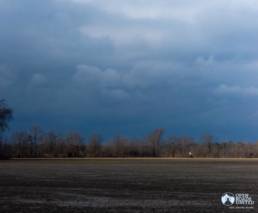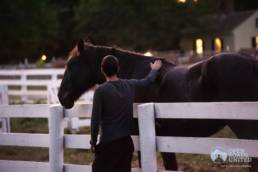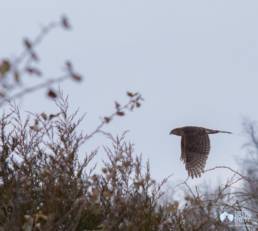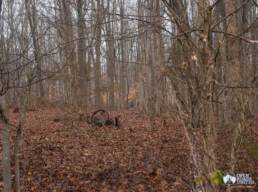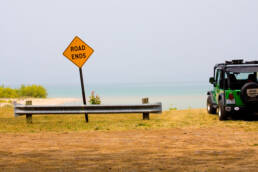“What is most crucial is to remember to pursue the way of the self selflessly, not for any profit. Because we concretely are universal self, there is no particular value in talking about it. Yet if we don’t make every effort to manifest it, just knowing about it is useless. To concretize the eternal, that is the task before us. Even if we have a cup of cool, clean water sitting right in front of us, if we don’t actually drink it, it won’t slake our thirst. The expression of universal self is a practice that is eternal, but to the extent that we don’t walk it ourselves, it won’t be realized, it won’t be our path.”
– Kosho Uchiyama, Opening the Hand of Thought
“It is that very photograph (the leaping man at train station) which was for me the spark that set fire to the fireworks and made me suddenly realize that photography could reach eternity through the moment,” he once recalled.
– Henri Cartier Bresson
My friend Michael Wilson, a stupendous photographer, who hails from my home town of Cincinnati, recently offered a class through a local arts center.
I was chagrined I could not take the class as Michael is a very talented photographer.
He has over the years specialized in photographing musicians including Lyle Lovett, B. B. King, Waylon Jennings, Randy Newman, Emmylou Harris, Bill Frisell, David By
Do yourself a favor and check out his work @ http://www.michaelwilson.pictures/
The purpose of the class Michael was offering was to: “consider the motivations [reasons] for our picture-making and how we might nurture inspiration and enthusiasm in the long term…”
In the class, Michael envisioned that:
Participants will…
- Mine the history of photography for the various reasons/intentions artists have relied on in the past
- Move toward a clearer recognition of that which most strongly motivates us personally as picture-makers
- Test various ways to nurture and strengthen our personal practice of photography
Mostly, I wanted to take Michael’s class because the question posited by Michael is one that I, like many, have been pondering for years.
That question being, in short, why bother to create?
Or more properly, why devote so much time, if not one’s life, to the creation of art which, quite possibly, might only find minimal exposure while generating little profit or recognition?
For while a small number of artists do find fame and fortune, or some other form of reward; most do not accrue any of the benefits or compensation traditionally valued by our, or most, societies.
I’ve noted this is a question that goes unanswered by many artists as well as those who appreciate the arts, including many who have spent decades seeped in the arts.
For myself, I can trace the personal origins of considering this question to one particular class I took while studying English Literature at the University of Cincinnati.
I was in the middle of a class on c0ntemporary American literature and we were just completing Thomas Pynchon’s Gravity’s Rainbow.
GR is a novel which defies easy description. Good Reads says of the novel, “Winner of the 1973 National Book Award, Gravity’s Rainbow is a postmodern epic, a work as exhaustively significant to the second half of the 20th century as Joyce’s Ulysses was to the first. Its sprawling, encyclopedic narrative, and penetrating analysis of the impact of technology on society make it an intellectual tour de force.”
The book is some 900 exhausting, and often, worthwhile pages, featuring some 45 or so main characters. These characters range and roam from Nazi Germany during World War II to 70’s Santa Barbara where Dick Nixon meets his end in a VW bug- smothered by a clear plastic laundry cleaning bag….
Suffice it to say that reading the novel entails a significant sacrifice of time and energy. Writing it took- I believe- Pynchon some 14 years.
At the outset of this final class on GR, the professor wondered aloud, is the time devoted to this work, worth it?
“Why he asked, “do we spend so much time reading and considering and creating such works- what’s the purpose?”
“What is the purpose of any art?” I immediately demanded, speaking before I even knew I spoke.
“That’s mean,” chimed in a young co-ed. She apparently thought I was calling out the professor on his life’s work, and in a way, I suppose I was.
“No,” the professor countered, “That’s exactly the point, what is the purpose of any literature, of any art?”
Not surprisingly, we got nowhere that day in terms of answering this question, yet the question has been foremost in my mind for decades.
Only of late, some thirty years later, have I have come to articulate three reasons for personally living in and pursuing the arts.
In my case, the arts largely boil down to photography and writing.
I have doggedly pursued and failed miserably at many other forms of art throughout the years (an esteemed music professor once correctly told me that I was clearly born without any sense of rhythm; I also possess documentation that I am the worst poet in the world).
Accordingly, I know a great deal about pursuing, and even more about failing at, the arts. And yet I continue to paddle hopelessly back against the current, trying to reach the green light…
Nevertheless, my work and pondering over the years have lead me to value the arts for the following three reasons.
1. Art serves to concretize the eternal
Simply said, while of much life is not beautiful or sublime or of great importance, some of it is. Art allows us to freeze, to concretize seconds, moments, even hours (in film for instance and theater), of such sublime beauty and importance.
When these moments have been captured we can study those moments and come to a greater understanding of our lives, of our worlds and our place in those worlds. Our lives become clearer, richer through the comprehension and appreciation of these moments.
More importantly, others can learn from and appreciate such moments; may have their lives enriched. Where would any of us be if the visions of Mozart and Shakespeare were not concretized?
Whether creating our own best work or stumbling upon the very best work of others, when we view and ingest, to the marrow of our bones, such eternal beauty encased as if in amber, our vision, our appreciation, of ourselves, our world and our universe multiplies exponentially.
Consider the first time that you were confronted with a truly great piece of work.
Can you honestly say that your life was the same after that confrontation, that it had not been permanently enriched?
2. Art furthers my development and pursuit of a spiritual life.
I find art and the spiritual to be inexorably fused. And while there is much I do not like or even respect about many religions, especially the Catholic prison of my youth, spirituality and beauty can be found in even the most mysoginistic and brutal of religious organizations.
I have no love for the Catholic Church but will remember until the day I die- from the wandering days of my youth- the beauty of Notre Dame and Sacre-Couer Cathedrals.
Any doubt in my mind that art and spiritualism are inexorably linked was permanently dispelled when I saw McCoy Tyner, and his trio take the stage at Ravinia outdoor amphitheater outside of Chicago in 1998.
On a faultless summer night night they entered, stage right, as if they were Gods walking into a temple. They played in the same manner.
They played devoid of all ego; each of them set up front, at the edge of the stage, as if to announce the equality of their music and their group. The MTT was nothing short of spectacular that night, each man a conduit for magic. They played because it would had been a sin for them not to play.
I met other gods- albeit rarely- in the subsequent thousand music shows I attended and or photographed.
Among those shows was Sonny Rollins at the Madam Walker Theater in Indianapolis on June 16, 1999. The theater, a jewel box crafted in an African motif, held 935 people.
Rollins for the length of the 2 plus hour show held every one of the rapt spectators in awe and in the palm of this hand. We collectively rose and fell with his music.
And in my current spiritual practice I constantly find great beauty. Even more, I find a greater ability through spiritual practice to better appreciate the grandeur and aesthetic wonders of the world as they appear, sometimes subtlety, before my eyes.
I further find that my current spiritual practice provides me a greater capacity for seeing, appreciating and capturing that beauty.
3. When used properly the camera is an incomparable tool which can ensure that one lives a fascinating and unpredictable life.
Before I thought out the answer to the question, “Why Art?” people would occasional ask me, why photography, why photograph?
It took me a while to assemble a coherent replay. Eventually I came to tell people that I I always carry a camera because you never know where it will take you- literally.
Even though nearly everyone considers themselves a photographer these days- because they have a cell phone- a good photographer with a good kit, can go places others can not.
In the hands of the right person, that is to say a person with a little skill, a little imagination and a considerable disinterest in living the standard material American life, a camera is equal parts passport, magic wand and sufficient justification for a life worth living.
The first portrait I ever took was of Bill Clinton. He was running his first race for President and I was volunteering for a local politician. The local Democratic party convinced him to detour his caravan so as to allow photos with local politicians. Clinton’s campaign had just begun to catch fire and he was a hot commodity.
And so I came to be standing on the side of the road when his three bus caravan pulled over where we stood. Having been to the rally the day before I knew that Clinton would alight from the third unmarked bus and not the first campaign decorated bus of the caravan.
I was alone as he stepped off the third bus. My first photos of Clinton are blurry as he was attempting to shake my hand as I attempted to photograph him
Eventually he made his way to the main crowd.
“Alright, let’s get this show on the road,” he said a rasping booming voice,- “where’s the photographer?” he demanded.
Silence. Five, ten seconds. Slowly it dawned on me that no one had remembered to bring a photographer.
“Here,” I shouted out.
A few seconds later I found myself taking portraits of Clinton, Gore, their wives and other local politicians.
Secret service agents parted the sea of local pols and their petite entourages. I faced Clinton through the divide as he placed an arm around the first politician.
“Is this alright?” he asked.
“That’s fine Governor,” I said. Madness, I thought.
My camera, that day, was a used Nikon film camera that I bought in a pawn shop for 75.00. I knew then that I had discovered a secret society that I very much wanted to be a part of.
Since then, I have shot rock festivals from a small doorless helicopter, with nothing save a very lightweight seatbelt, standing between me and eternity.
For a number of years a was in charge of photography for a number of music festivals. I’d manage the pit overseeing other photographers while shooting my own work.
We stood between the roar of the main stage and the roar of 20,000 people standing at our backs.
I’ve shot countless smaller shows, no ones, artist artists and legendary stars alike.
I’ve traveled to places of sublime beauty- especially in the American West.
One morning after making my way- in the pre-dawn dark- over the red rock cliffs of Canyon De, Chelly I shot a spellbinding sunrise.
As the sun rose I saw that I was alone. I had been the only person on earth that morning to photograph that flawless and mind boggling sunrise over that breathtaking landscape.
I walked back to the car to find that I had fled my car in such haste that early morning that I had left the car running and the door open.
I spent the remainder of the morning exploring that gorgeous canyon with an aging, kind, Navajo guide.
There were simpler, less spectacular times that are, nonetheless, burned into my memory.
Last month I found myself desperate to escape my Covid prison cell. I booked a room at Murphin Ridge Inn in Adams County Ohio.
I had been there many times in the past- the owners were friends. Yet they had retired and sold the lodge and I could not bear to go back and not see them there. I stayed away for a decade.
The lodge is in the Appalachian foothills and surrounded by Amish farm lots and large patches of woods. I returned there last month- haunted by memories- to find the place as beautiful as ever and to find that the new owners were also wonderful people in their own right.
On that return visit, I took my camera into the woods one dank afternoon when the snow was turning to sleet. I was slip sliding up a muddy trail, trying to remember the last time I was alone in the woods and accompanied only by the the quiet hiss of snow falling through the trees when five full grown deer came crashing through the woods, right to left, lungs pumping, nostrils snorting, legs thumping the earth in unison, eyes large in terror as if their very lives were in peril. They crossed the trail ten feet ahead of me.
For seven seconds, all was noise and choas. The scene so expected I did not even think to raise my camera.
Speechless I stood on the trail and listened to the herd depart.
I was reminded of an early wet morning in the badlands when, walking down a wet clay trail holding a camera in each hand, I fell on slick clay. I hit hard. Cursing I climbed to my my feet and found myself face to face- with a mountain ram. Maybe a dozen feet separated us. Will he charge? I wondered. He did not and I got that shot.
Back in the Adam’s County woods, as the deer faded into the woods and the sound of their alarm disappeared, my attention was drawn, for no particular reason, to a parallel trial some 100 feet to the east.
Through the woods, I saw an apparition- a young Amish women in a pale blue dress with a white bonnet silently making her way down the trail.
She was as quiet and circumspect as the deer were loud. I took her photo, she was but a small blue smudge in the dark empty brown woods. I headed on my way.
Other memories, hundreds of memories crowd my mind, demanding to be told.
I recall three late winter weeks in Yellowstone, and time spent throughout Idaho and Wyoming.
A blessed week in Yosemite, with friends, making my way, in the rain, up and down the Merced river.
Traveling the country for six weeks by train on grant.
Traveling the country with my sons, also by train, just before the bottom fell out of our lives.
I also recall countless portraits of them later, on other smaller and happy trips together, after our lives came back together again.
I recall photographing bald eagles, spoonbill rosettes and osprey at dawn in the flats outside of Flamingo village in the Everglades. Later that morning we for fished for shark on light tackle.
I think of the ten thousand cranes landing in unison on the Rio Grande in southern New Mexico- again in the predawn cold.
As a photographer one is often sleepy and never eats regular meals. One is often, even in the best of times, cold and/or wet.
One eats many cheeseburger and fries, in roadhouse taverns, if there is such a place- or cold peanut butter and jelly bagels from the bottom of the pack or back of the car.
Mostly, however, one is, very often, very very happy and the road, as Basho once said, becomes home and the world, as I was told a long time ago by Michael Wilson, becomes one’s studio.
These are the reasons I create.



